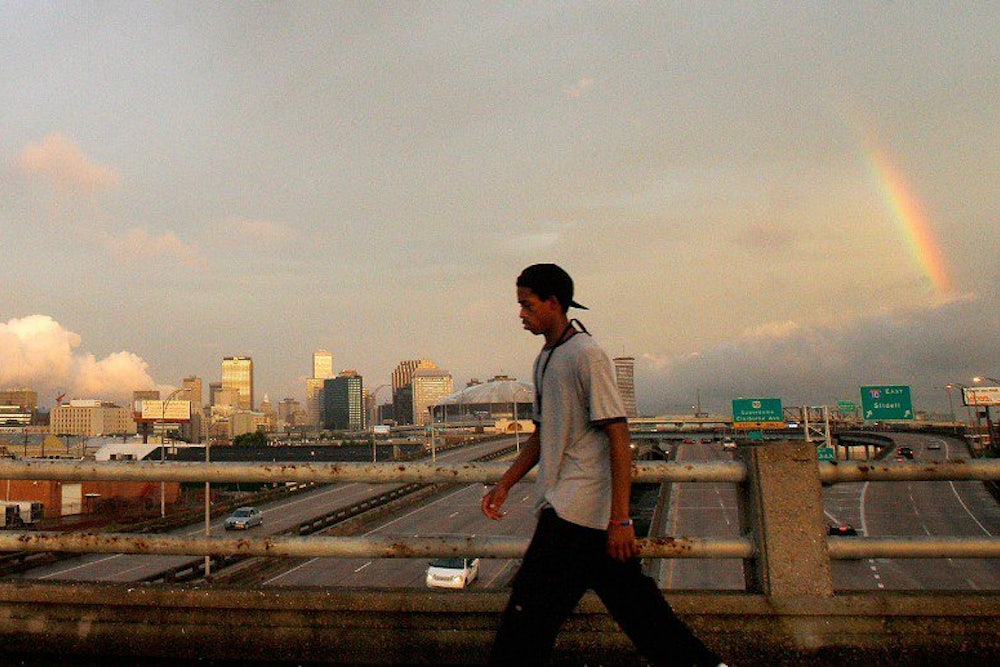Hurricane Katrina is the costliest disaster in U.S. history and among the three costliest in the world ever. As such, New Orleans and the Gulf Coast stand as a lesson about what it takes to rebuild after a major catastrophe.
Unfortunately, the demand for such learning seems to only grow. In the past few years, we have seen a steady torrent of disasters worldwide—Haiti, Christchurch, Sichuan China, Japan—and the tornadoes that recently ripped through Joplin and the South.
The coming ten year anniversary of September 11 further reminds us that disasters don’t just come in the form of Mother Nature (or the Army Corps of Engineers).
So what have New Orleans and Mississippi taught us?
At this sixth anniversary of Katrina, a new book by the Brookings Institution Press, Resilience and Opportunity: Lessons from the Gulf Coast after Katrina and Rita, attempts to answer that question. The contributors, many from the region, provide a rich portrait of post-disaster recovery and the challenges local leaders confronted in trying to remake a region in the face of multiple disasters.
Much has changed since the raw images of stranded families on rooftops and in the Superdome. The early lessons from the Gulf Coast may be surprising.
1. Systemic reforms are possible in the wake of tragedy.
The sheer magnitude of a catastrophic disaster literally forces a do-over in nearly all aspects of society and governing. Fixing damaged buildings and infrastructure is the easy part.
Like Japan and its resurgent qualms over nuclear energy or Haiti with its government so weak it can’t serve those in need, Katrina and the levee failure exposed all that was badly broken in New Orleans. High poverty and racial disparities, failing public schools, high crime, a segregated health care system, a struggling economy, and fragile coastal protection (just to name a few) combined with miles of ruin to create a daunting recovery agenda.
Yet, after some fits and starts, New Orleanians and their many partners have risen to the challenge.
Today, there is a new evacuation plan that takes into account carless and vulnerable households, which proved effective during Hurricane Gustav. The city and metro area are benefiting from a new series of charter schools, a network of community-based primary care centers for low-income patients, a fairer and more efficient criminal justice system, and new ethics reforms to make local government more accountable to taxpayers. Some of the most hard-hit neighborhoods are being rebuilt more sustainably and with new schools and opportunities. In short, the Big Easy has tackled not so easy issues and is making headway.
2. Engaged citizenry and new coalitions effectively called for an end to the status quo.
How did all these changes happen? Frankly, not due to Mayor Nagin, whose hands-off approach resulted in a vacuum of leadership.
In retrospect, that void provided an opening to residents who became citizen leaders overnight. Their deep desire to rebuild their beloved home and city translated into unprecedented levels of citizen participation in public meetings, greater public sophistication of civic issues, and new coalitions that called for the end to government corruption, violent crime, and poor health outcomes. The urgency to fix neighborhoods more equitably led to the rise of new community organizations and nonprofit housing developers.
In Mississippi, a new housing coalition pushed for, and eventually won, key measures to help displaced low-income renters and homeowners in a state that overtly neglected its poor in the wake of disaster.
In the last five years, the region has also been a model for how to deploy timely, accessible, and visually arresting data to motivate citizen and policy action. Data was powerful in tracking blight and repopulation by neighborhood in New Orleans and in advocating for housing reforms in Mississippi.
The Gulf Coast also learned that the physical rebuilding of schools, restaurants, and places of worship did more than restore neighborhoods but created critical places for residents to network, retain community ties, organize meetings, and solve problems together.
This level of community involvement and civic capacity is key to building regional resilience and opportunity, even in the face of crisis.
3. National-local partnerships helped make reforms possible.
The remaking of New Orleans and the Gulf Coast is also a story about the power of national organizations and government partnering with state and local leaders. There is always a balancing act between national or federal aid and local control and capacity building. But the scale of experimentation underway in New Orleans and parts of Mississippi is simply not possible without outside resources.
National philanthropies empowered local philanthropies and nonprofits and put their weight behind reforms in education, planning, housing, and coastal restoration. National experts provided direct assistance in criminal justice reform, economic development, and neighborhood revitalization. Several federal agencies have been credited for their constructive working relationship with the state and city, especially the departments of Justice, Health and Human Services, and Housing and Urban Development (the latter particularly under President Obama).
In recent months, there have been new national-local partnerships forged in New Orleans. This continued interest and confidence in the city is partly due to Mayor Mitch Landrieu and his infectious optimism and can-do realism. Bloomberg Philanthropies, Obama’s Strong Cities, Strong Communities initiative, and Goldman Sachs’ 10,000 Small Businesses initiative have recently chosen New Orleans as one of a few cities for turnaround initiatives.
As the book argues, enormous challenges remain. The region needs to step boldly into a more innovative, energy diverse, post-recession economy that delivers meaningful prospects for residents. A deep investment in coastal wetland recovery must complement the re-opening of oil leases off the shores of Louisiana and Mississippi.
The Gulf Coast’s post-Katrina future is still unfolding. But New Orleans is teaching the world it knows how to turn disasters and desperation into hope and opportunity. It’s a comeback story not just for the disaster hall-of-fame but the annals of urban history.
